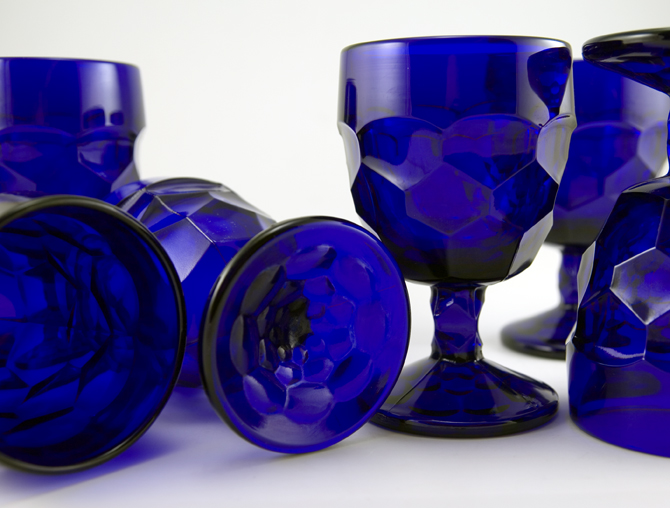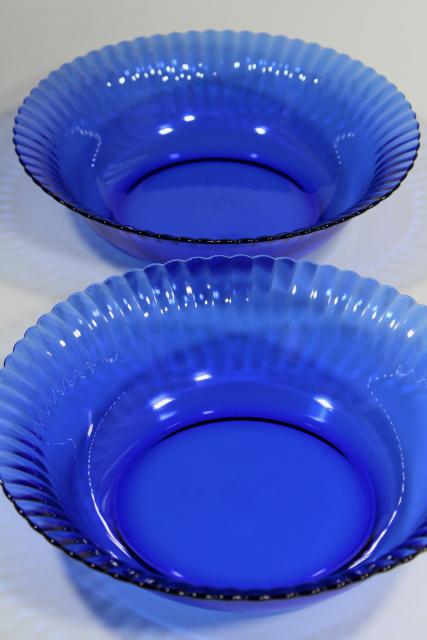
Cobalt Blue Glass(July 2007) by Monica Clements (Schiffer Book for Collectors).Encyclopedia of Cobalt Glass(June 2009) by Tom Felt, Gene and Bernadette Girard.Blue Henry: The Almost Forgotten Story(Oct 2010) by Ivo Haanstra.Bristol Blue(May 2013) by Mike Rendell.Click on the book cover or title to see more information. We have selected some new or recent books as well as some favourite classic books on Cobalt Blue Glass.

It is always interesting to see what cobalt blue glass items are for sale,

The popularity of these lines encouraged many other Depression era glass makers to produce cobalt blue glass. This is how the Moderntone pattern and Royal Lace pattern came to be produced in Deep Blue. There is a story that the Hazel Atlas company had a large vat of cobalt blue glass left from makingĪ planned quantity of Shirley Temple items, and decided to use it up by producing some of their other lines in cobalt blue. These, like several other cobalt blue patterns in depression glass, have been reproduced in recent years. The Hazel Atlas company produced their Shirley Temple mugs and tableware in cobalt blue with a white decal likeness of the child actress, beginning in the early 1930s and continuing to the 1950s. Fenton wrote that he had observed that blue glass sold quicker and for a better price than any other color. Heisey called their cobalt blue "Steigel Blue" and Fostoria produced two cobalt blues which they called "Regal Blue" and "Azure Blue".Ĭobalt blue is one of the most popular colors in glass. The Cambridge Glass Company used cobalt for their Royal Blue and their Moonlight Blue. So isįenton's Royal Blue and Periwinkle Blue (both from the 1930s), their Blue Silvertone in the Sheffield pattern and Velva Blue from 1981. Fenton's blue carnival glass is a cobalt blue. There are many famous types of blue-colored glass which are in fact cobalt blue glass. Cobalt aluminate makes turquoise glass cobalt silicate produces violet-blue glass.Ĭobalt oxide added to borosilicate glass produces a purple or red glass. Whilst cobalt oxide produces a deep royal blue, there are other compounds of cobalt which produce different colors. This deep blue glass can then be ground up into a powder called "SMALT" which is used as a coloring agent for enamel, for glazes on pottery, and for making more blue glass. Deeper blues are obtained by adding up to ten pounds of cobalt oxide to a ton of glass. To produce a blue colour in glass, you only need to add five ounces to a ton of glass. Small amounts of cobalt (around 1 ounce per ton of glass) are used to neutralise the yellow tint of iron in glass such as window glass. Surprisingly it also makes up 4.3% of vitamin B12. Since then it has been used increasingly in metal alloys, and over 80% of today's production of cobalt is used as a metal, - it is, for example, a component of the best magnets.

There was even one piece of cobalt blue glass in Tut-Ankh-Amen's tomb in Egypt.īefore the 1920s the world's production of cobalt was primarily used as a glass and ceramic colorant. It was discovered by a Swedish chemist, Georg Brandt, in 1742 although the coloring properties of the ore has been known since very ancient times. It only requires a small amount of cobalt oxide to produce a deep rich blue.Ĭobalt is a metal, found in copper and nickel ores in many countries, but mined chiefly in Africa, USSR, Australia, Canada and smaller amounts in other countries. Copper is a more delicate colorant than cobalt. Most blue glass is given its color either from cobalt oxide or from copper oxide added to the molten glass. It is made by incorporating cobalt oxide in the molten glass mixture. Cobalt Blue Glass information from the Glass EncyclopediaĬobalt blue glass is normally a deep rich blue like the vase on the left.


 0 kommentar(er)
0 kommentar(er)
